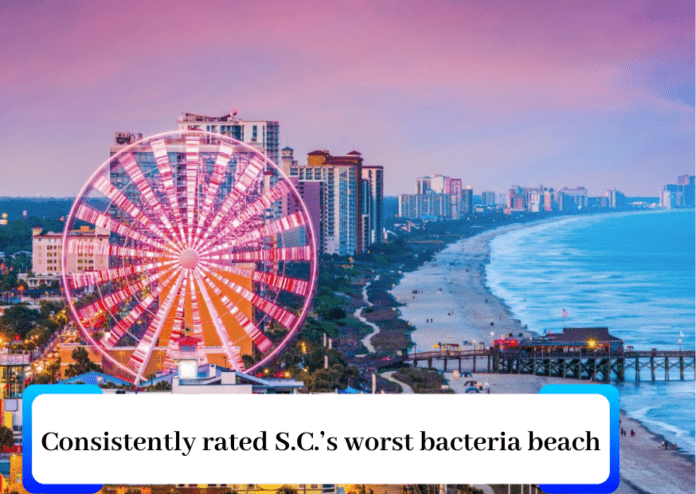Yet another Myrtle Beach sewer main line has caved.
This time the main caved in a different location on 48th Avenue North. It is these ongoing sewer line breaks that gets Myrtle Beach consistently ranked as the 5th dirtiest bacteria beach in America.
MyrtleBeachSC News predicted this event would happen when the same pipes caved on 48th a few years past, spewing over 200,000 gallons of raw sewage into the surrounding area and the Atlantic Ocean.
The City of Myrtle Beach chose to repair one small section of the main at that time instead of replacing the corroded pipe. As we predicted, the main broke once again in another section.
As a result of these leaks, Myrtle Beach is considered the dirtiest bacteria beach in S.C.
OTHER CONTRIBUTING FACTORS
Myrtle Beach being rated as one of South Carolina’s dirtiest bacteria beaches could be due to a variety of factors. Coastal areas are naturally susceptible to the presence of bacteria and other microorganisms, and several factors can contribute to increased contamination levels.
One possible reason for Myrtle Beach’s rating is the high volume of visitors it receives each year. With a large number of people frequenting the beach, the likelihood of bacteria contamination from human activities, such as improper waste disposal or swimming while ill, increases.
Another contributing factor may be the presence of stormwater runoff. Heavy rains and storms can wash pollutants, including bacteria, from inland areas into the ocean and ultimately onto the beach. This runoff can carry contaminants from urban areas, agriculture, and wildlife habitats, further compromising water quality.
Inadequate sanitation infrastructure (collapsed Myrtle Beach Sewer main) or ineffective waste management practices in the surrounding area can also contribute to bacterial contamination. If local wastewater treatment plants are not properly equipped or maintained, it can lead to increased bacterial presence in the beach waters.
Furthermore, proximity to other potential pollution sources, such as industrial facilities or agricultural operations, can impact water quality and contribute to the bacterial load on the beach.
It’s important to note that beach monitoring programs play a crucial role in identifying and reporting bacterial contamination levels. The ratings can change over time as measures are taken to mitigate pollution sources and improve beach cleanliness.
If you’re planning a visit to Myrtle Beach or any other beach, it’s always recommended to stay informed about local water quality, if a Myrtle Beach Sewer Main has collapsed, follow any advisories or warnings issued by authorities, and practice responsible beach behavior to help maintain a clean and healthy environment for everyone to enjoy.


